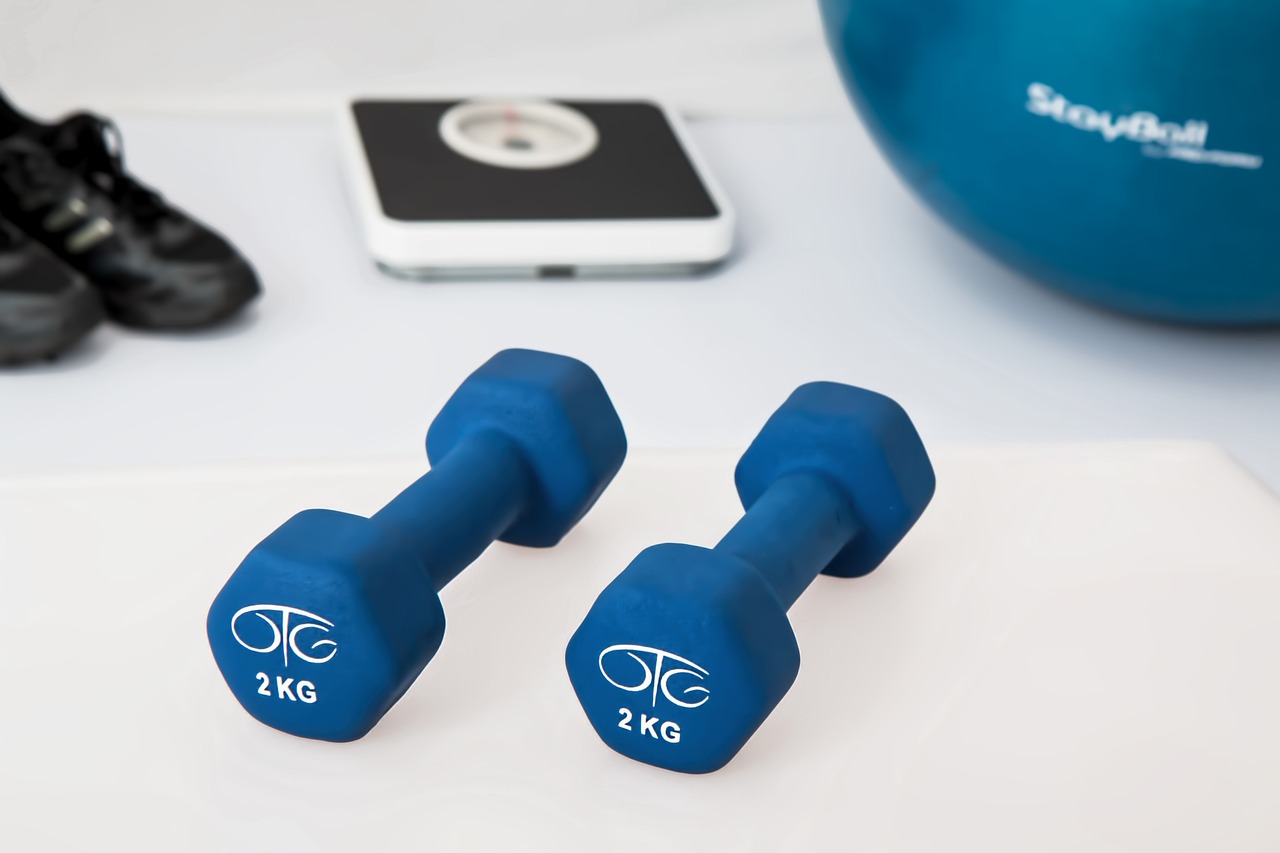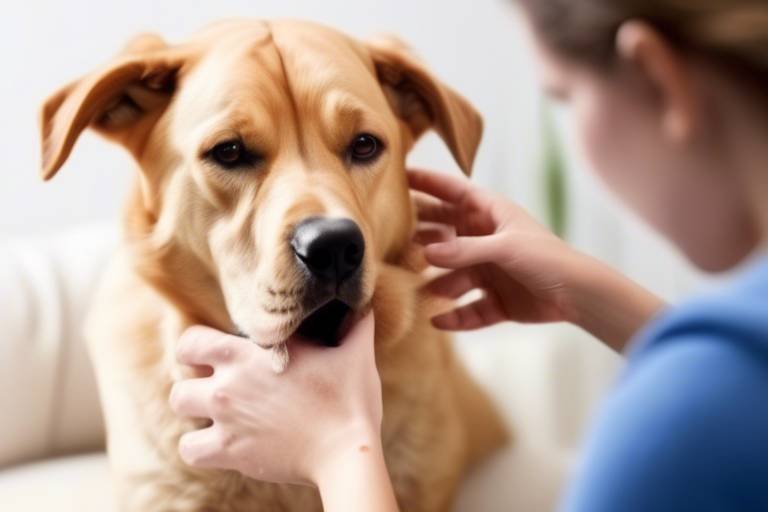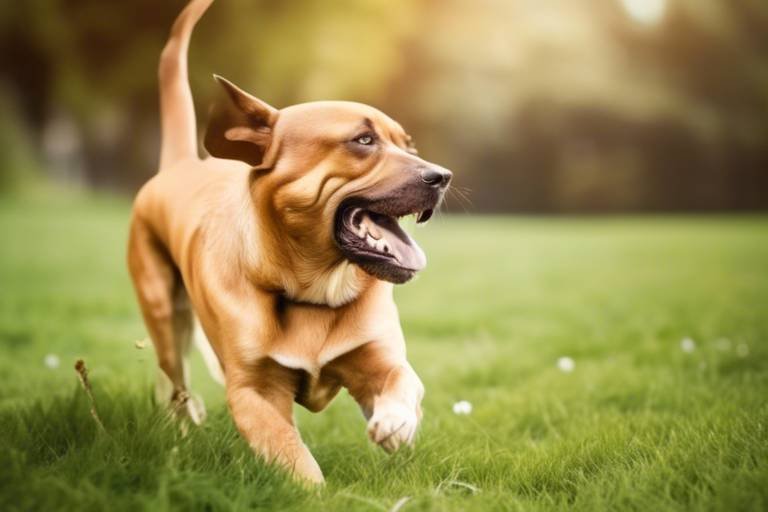The Importance of Pet Weight Management
As pet owners, we all want the best for our furry companions, and one of the most vital aspects of their care is maintaining a healthy weight. Just like humans, pets can suffer from a variety of health issues related to obesity. It's not just about aesthetics; it's about ensuring a long, happy, and healthy life for our beloved animals. Imagine your pet as a little athlete, full of energy and vitality, versus a sluggish couch potato—who wouldn't want the former? In this article, we'll dive deep into the importance of pet weight management, exploring the health risks associated with obesity, signs that your pet may be overweight, and effective strategies for maintaining a healthy weight.
Understanding the significance of weight management goes beyond just keeping your pet looking good. It directly impacts their overall health, longevity, and quality of life. Overweight pets are at a higher risk for serious health conditions, including diabetes, heart disease, and joint problems. Think of it this way: carrying extra weight is like asking your pet to run a marathon with a heavy backpack. It’s exhausting and detrimental to their health! By managing their weight effectively, you can help prevent these issues and ensure your pet enjoys a more active and fulfilling life.
Moreover, many pet owners may not realize that even a small amount of excess weight can lead to significant health problems. For instance, a cat that is just a couple of pounds overweight may be at risk for developing diabetes or arthritis. This is why it is crucial to be proactive about your pet's weight. Regular veterinary check-ups, monitoring their diet, and engaging them in physical activities are all essential components of a successful weight management plan.
In the coming sections, we will explore how to recognize when your pet is overweight, the importance of body condition scoring, dietary considerations, and the types of exercises that can keep your pet fit and healthy. By the end of this article, you will have a comprehensive understanding of how to manage your pet's weight effectively, ensuring they live their best life possible.
- What is the ideal weight for my pet? The ideal weight varies by breed and size. Consult your veterinarian for specific recommendations.
- How can I tell if my pet is overweight? Look for signs such as difficulty in movement, excessive panting, and an inability to feel their ribs.
- What are the best exercises for my pet? Activities like brisk walks, playtime, and agility training are great options.
- How often should I take my pet to the vet for weight checks? Regular check-ups every six months are recommended to monitor your pet's weight.
- Can I adjust my pet's diet without consulting a vet? It's best to consult a veterinarian before making any significant changes to your pet's diet.

The Health Risks of Obesity in Pets
This article explores the critical role of maintaining a healthy weight for pets, discussing the impacts on their overall health, common weight-related issues, and effective strategies for pet owners.
Obesity is not just a cosmetic issue for our beloved pets; it is a serious health concern that can lead to a myriad of complications. When pets carry excess weight, they become susceptible to various health problems that can drastically shorten their lifespan and diminish their quality of life. For instance, obesity can significantly increase the risk of developing diabetes, which is a chronic condition that requires lifelong management. Imagine your furry friend struggling to regulate their blood sugar levels; it’s a daunting thought for any pet owner.
Furthermore, excess weight puts immense stress on a pet's joints, leading to conditions such as arthritis. This can result in chronic pain and mobility issues, making it difficult for pets to enjoy their favorite activities, like chasing after a ball or going for walks. It’s heartbreaking to see a once-active pet become lethargic and disinterested due to weight-related discomfort.
Another critical aspect to consider is the impact of obesity on a pet's heart health. Just like in humans, excess weight can lead to heart disease in pets. The heart has to work much harder to pump blood through a body that is carrying extra weight, which can lead to serious cardiovascular issues over time. This is often a silent killer, as many pet owners may not realize the extent of the problem until it’s too late.
Additionally, obesity can contribute to respiratory problems. Pets that are overweight often have difficulty breathing, especially during physical activity. This can lead to excessive panting and fatigue, which can further deter them from exercising, creating a vicious cycle of weight gain and inactivity.
It’s essential to recognize that maintaining a healthy weight is not just about aesthetics; it’s about ensuring our pets lead long, fulfilling lives. Here are some of the most alarming health risks associated with obesity in pets:
- Diabetes: A condition that affects the body's ability to produce or respond to insulin.
- Joint Issues: Increased pressure on joints can lead to arthritis and chronic pain.
- Heart Disease: Extra weight can strain the heart, leading to various cardiovascular problems.
- Respiratory Problems: Difficulty breathing during exertion due to excess weight.
- Reduced Lifespan: Overall health complications can lead to a significantly shorter life.
In conclusion, the health risks associated with pet obesity are significant and multifaceted. As responsible pet owners, it is our duty to ensure that our furry companions maintain a healthy weight to avoid these severe health issues. Regular veterinary check-ups and being vigilant about their diet and exercise can make all the difference in giving our pets the happy, healthy lives they deserve.
Recognizing when your pet is overweight is crucial for timely intervention. Common signs include difficulty in movement, excessive panting, and an inability to feel their ribs. Regular check-ups can help monitor their weight.
Body condition scoring is a valuable tool for assessing your pet’s weight. This method involves evaluating their physical appearance and feel, providing a clear indication of whether they are underweight, ideal, or overweight.
The body condition scoring system typically ranges from 1 to 9, with 1 being emaciated and 9 being obese. Knowing how to interpret these scores can help owners manage their pet's weight effectively.
Regular assessments using body condition scoring can guide owners in adjusting their pet's diet and exercise routine. Frequent evaluations ensure that pets maintain a healthy weight throughout their lives.
A balanced diet is crucial for maintaining a healthy weight in pets. Understanding nutritional needs and the importance of portion control can significantly impact your pet's weight management journey.
Regular exercise is vital for keeping pets at a healthy weight. Engaging in daily activities not only aids weight management but also enhances mental stimulation and overall well-being for pets.
Different types of exercises cater to various pets' needs, from brisk walks and playtime to agility training. Finding the right activity can keep pets motivated and physically fit.
Creating a consistent exercise routine helps pets maintain a healthy weight. Incorporating fun activities can make exercise enjoyable and encourage a lifelong habit of physical fitness for your furry companions.
Veterinarians play a crucial role in pet weight management. Regular check-ups and professional advice can help pet owners create tailored weight management plans that suit their pet's specific needs and health conditions.
Q: How can I tell if my pet is overweight?
A: Look for signs like difficulty moving, excessive panting, and an inability to feel their ribs. Regular vet check-ups can also help monitor weight.
Q: What should I feed my overweight pet?
A: Consult your veterinarian for a balanced diet plan tailored to your pet's needs. Portion control is key!
Q: How much exercise does my pet need?
A: It varies by breed and age, but generally, aim for at least 30 minutes of activity daily.

Signs Your Pet May Be Overweight
Recognizing when your furry friend is tipping the scales into the overweight category is crucial for timely intervention. Just like humans, pets can struggle with their weight, and it’s our job as pet owners to keep a close eye on their health. If you’ve noticed your pet has been less active or seems to be panting more than usual, it might be time to take a closer look at their weight. But what exactly should you be looking for? Here are some common signs that your pet may be carrying a few extra pounds:
- Difficulty in Movement: If your pet seems to struggle with climbing stairs or getting up from a resting position, it may be due to excess weight. This can lead to joint stress and discomfort.
- Excessive Panting: While panting can be normal after a good play session, if your pet is panting heavily while resting or seems to be out of breath after light activity, it could be a sign of obesity.
- Inability to Feel Ribs: When you run your hands along your pet’s side, you should be able to feel their ribs without too much pressure. If you can’t feel them at all, it’s likely your pet is overweight.
- Fat Deposits: Look for any noticeable lumps or fatty deposits, especially around the abdomen and hips. These can be indicators of excess weight.
Regular check-ups with your veterinarian are essential to monitor your pet’s weight. They can provide insight and guidance tailored specifically to your pet’s needs. It's not just about aesthetics; maintaining a healthy weight is vital for your pet's overall well-being and longevity. Remember, a few extra pounds can lead to serious health issues, so being proactive is key!
Body condition scoring is a valuable tool for assessing your pet’s weight. This method involves evaluating their physical appearance and feel, providing a clear indication of whether they are underweight, ideal, or overweight. Understanding how to score your pet can empower you to take action before weight-related problems become severe.
The body condition scoring system typically ranges from 1 to 9, with 1 being emaciated and 9 being obese. Knowing how to interpret these scores can help owners manage their pet's weight effectively. For instance, a score of 5 is considered ideal, where your pet has a noticeable waist and ribs are easily felt but not protruding. As you assess your pet, take note of their score and consult with your veterinarian if you notice any concerning changes.
Regular assessments using body condition scoring can guide owners in adjusting their pet's diet and exercise routine. Frequent evaluations ensure that pets maintain a healthy weight throughout their lives. Just like you would keep track of your own health, it’s important to keep tabs on your pet’s condition. This proactive approach can make all the difference in your pet’s quality of life.
Q: How often should I check my pet's weight?
A: It's recommended to check your pet's weight at least once a month, but more frequent checks can be beneficial, especially if your pet is on a weight loss program.
Q: What should I do if my pet is overweight?
A: Consult your veterinarian for a tailored weight management plan that includes dietary changes and an exercise routine suitable for your pet.
Q: Can certain breeds be more prone to obesity?
A: Yes, some breeds are genetically predisposed to obesity. Always discuss breed-specific risks with your vet.
Q: Are there specific foods that can help my pet lose weight?
A: There are many weight management pet foods available that are lower in calories but still provide essential nutrients. Your vet can recommend the best options.
Body Condition Scoring
This article explores the critical role of maintaining a healthy weight for pets, discussing the impacts on their overall health, common weight-related issues, and effective strategies for pet owners.
Obesity can lead to severe health problems in pets, including diabetes, joint issues, and heart disease. Understanding these risks is essential for responsible pet ownership and ensuring a longer, healthier life for our furry friends.
Recognizing when your pet is overweight is crucial for timely intervention. Common signs include difficulty in movement, excessive panting, and an inability to feel their ribs. Regular check-ups can help monitor their weight.
Body condition scoring is a valuable tool for assessing your pet’s weight. This method involves evaluating their physical appearance and feel, providing a clear indication of whether they are underweight, ideal, or overweight. The scoring system typically ranges from 1 to 9, with 1 being emaciated and 9 being obese. Understanding where your pet falls on this scale can empower you to make informed decisions regarding their diet and exercise routines.
To assess your pet’s body condition score, you can look for specific indicators. For example, if your pet has a score of 4 or 5, they are generally considered to be at an ideal weight, with a visible waist and easily felt ribs. On the other hand, a score of 6 or higher indicates excess weight, which can pose health risks. Regular assessments using body condition scoring can guide owners in adjusting their pet's diet and exercise routine, ensuring they maintain a healthy weight throughout their lives.
It's important to note that different breeds may have unique body structures, so consulting with your veterinarian can provide additional insights tailored to your pet's specific needs. By being proactive and regularly evaluating your pet's body condition, you can ensure they live a long, healthy, and active life.
As mentioned, the body condition scoring system typically ranges from 1 to 9. Here’s a brief overview of what each score represents:
| Score | Condition Description |
|---|---|
| 1 | Emaciated |
| 2 | Very Thin |
| 3 | Thin |
| 4 | Moderately Thin |
| 5 | Ideal |
| 6 | Overweight |
| 7 | Obese |
| 8 | Very Obese |
| 9 | Extremely Obese |
Knowing how to interpret these scores can help owners manage their pet's weight effectively. If you find your pet falling into the overweight or obese categories, it’s time to take action!
Regular assessments using body condition scoring can guide owners in adjusting their pet's diet and exercise routine. Frequent evaluations ensure that pets maintain a healthy weight throughout their lives. By keeping track of changes in your pet's body condition score, you can make necessary adjustments to their lifestyle. This not only helps in preventing obesity but also promotes overall health and longevity.
A balanced diet is crucial for maintaining a healthy weight in pets. Understanding nutritional needs and the importance of portion control can significantly impact your pet's weight management journey.
Regular exercise is vital for keeping pets at a healthy weight. Engaging in daily activities not only aids weight management but also enhances mental stimulation and overall well-being for pets.
Different types of exercises cater to various pets' needs, from brisk walks and playtime to agility training. Finding the right activity can keep pets motivated and physically fit.
Creating a consistent exercise routine helps pets maintain a healthy weight. Incorporating fun activities can make exercise enjoyable and encourage a lifelong habit of physical fitness for your furry companions.
Veterinarians play a crucial role in pet weight management. Regular check-ups and professional advice can help pet owners create tailored weight management plans that suit their pet's specific needs and health conditions.
- How often should I assess my pet's body condition score? It’s recommended to assess your pet's body condition score every few months or during regular vet visits.
- Can I use treats while managing my pet's weight? Yes, but be mindful of the portion sizes and consider low-calorie treats to avoid excess weight gain.
- What if my pet refuses to exercise? Try different activities or toys to find what excites them; sometimes, a little creativity can go a long way!
Understanding the Scoring System
This article explores the critical role of maintaining a healthy weight for pets, discussing the impacts on their overall health, common weight-related issues, and effective strategies for pet owners.
Obesity can lead to severe health problems in pets, including diabetes, joint issues, and heart disease. Understanding these risks is essential for responsible pet ownership and ensuring a longer, healthier life for our furry friends.
Recognizing when your pet is overweight is crucial for timely intervention. Common signs include difficulty in movement, excessive panting, and an inability to feel their ribs. Regular check-ups can help monitor their weight.
Body condition scoring is a valuable tool for assessing your pet’s weight. This method involves evaluating their physical appearance and feel, providing a clear indication of whether they are underweight, ideal, or overweight.
The body condition scoring system typically ranges from 1 to 9, with 1 being emaciated and 9 being obese. This scoring system is essential for pet owners as it gives a clear visual representation of where their pet stands in terms of weight. Each score corresponds to specific physical characteristics that can help you determine your pet's health status. For instance:
| Score | Description | Physical Characteristics |
|---|---|---|
| 1 | Emaciated | Ribs, spine, and bones are easily visible; no body fat. |
| 4-5 | Ideal | Ribs can be felt but not seen; waist is visible when viewed from above. |
| 7-8 | Overweight | Ribs are difficult to feel; noticeable fat deposits; little to no waist. |
| 9 | Obese | Ribs cannot be felt; significant fat deposits; round appearance. |
Understanding this scoring system allows you to monitor your pet’s weight effectively. Regular assessments using body condition scoring can guide owners in adjusting their pet's diet and exercise routine. Frequent evaluations ensure that pets maintain a healthy weight throughout their lives, preventing the onset of obesity-related health issues.
A balanced diet is crucial for maintaining a healthy weight in pets. Understanding nutritional needs and the importance of portion control can significantly impact your pet's weight management journey.
Regular exercise is vital for keeping pets at a healthy weight. Engaging in daily activities not only aids weight management but also enhances mental stimulation and overall well-being for pets.
Different types of exercises cater to various pets' needs, from brisk walks and playtime to agility training. Finding the right activity can keep pets motivated and physically fit.
Creating a consistent exercise routine helps pets maintain a healthy weight. Incorporating fun activities can make exercise enjoyable and encourage a lifelong habit of physical fitness for your furry companions.
Veterinarians play a crucial role in pet weight management. Regular check-ups and professional advice can help pet owners create tailored weight management plans that suit their pet's specific needs and health conditions.
- What is the ideal weight for my pet?
Every pet is different, and factors like breed, age, and activity level play a significant role. Consult your veterinarian for personalized advice. - How often should I check my pet's weight?
It's advisable to check your pet's weight at least once every month, or more frequently if you are making dietary or exercise changes. - Can I use human food to manage my pet's weight?
While some human foods are safe for pets, many are not. Always consult your vet before introducing new foods into your pet's diet.
Regular Assessments
Regular assessments of your pet’s weight and overall health are not just a good idea; they are essential for ensuring your furry friend lives a long and happy life. Think of these assessments as routine check-ups for your pet's well-being. Just like we humans visit the doctor for annual check-ups, our pets also need that kind of attention. By keeping a close eye on your pet's weight, you can catch potential issues before they escalate into serious health problems.
One effective way to monitor your pet's weight is through the Body Condition Scoring (BCS) system, which provides a structured method for evaluating your pet's body composition. This scoring system typically ranges from 1 to 9, where a score of 1 indicates an emaciated pet and a score of 9 represents an obese one. Understanding where your pet falls on this scale can guide you in making necessary adjustments to their diet and exercise routine. For instance, if your pet scores a 7 or higher, it’s time to rethink their food intake and increase their physical activity.
Moreover, regular assessments can help you track your pet’s progress over time. Keeping a record of your pet's weight at each visit can reveal trends that might otherwise go unnoticed. This can be especially beneficial if you are implementing a new diet or exercise regimen. A simple table can be used to log these changes:
| Date | Weight | Body Condition Score | Notes |
|---|---|---|---|
| 01/01/2023 | 25 lbs | 5 | Starting weight |
| 02/01/2023 | 24 lbs | 4 | Increased exercise |
| 03/01/2023 | 23 lbs | 4 | Maintained diet |
Incorporating regular assessments into your pet care routine not only helps in weight management but also fosters a deeper bond between you and your pet. When you take the time to evaluate their health, you demonstrate your love and commitment to their well-being. Plus, it’s a great opportunity to discuss any concerns with your veterinarian, who can provide tailored advice based on your pet's specific needs.
So, don't wait for the annual vet visit to think about your pet's weight. Make it a habit to check their weight and body condition regularly, and keep a journal of your observations. This proactive approach can lead to a happier, healthier life for your beloved companion!
- How often should I assess my pet's weight? It's recommended to assess your pet's weight at least once a month, but more frequent checks may be necessary if they are on a weight loss program.
- What should I do if my pet is overweight? Consult your veterinarian for a tailored diet and exercise plan, and consider implementing gradual changes to avoid overwhelming your pet.
- Can I use human food to help manage my pet's weight? It's best to avoid human food without consulting your vet, as some foods can be harmful to pets. Stick to pet-specific treats and foods.
Dietary Considerations for Weight Management
When it comes to keeping your furry friend healthy, diet is a crucial piece of the puzzle. Just like humans, pets need a balanced diet to maintain a healthy weight and overall well-being. It's not just about feeding them; it's about feeding them right! So, what does that entail? First and foremost, understanding your pet's nutritional needs is vital. Different pets have different requirements based on their breed, age, and activity level. For instance, a playful puppy will have different dietary needs than a senior cat lounging on the couch all day.
One of the most effective strategies for managing your pet's weight is portion control. It's easy to fall into the trap of giving your pet a little extra here and there, especially when those big, pleading eyes are looking up at you. However, those extra treats can add up quickly! To help you visualize this, consider the following table that outlines recommended daily caloric intake based on your pet's weight:
| Pet Weight (lbs) | Daily Caloric Intake (kcal) |
|---|---|
| 5 | 200 |
| 10 | 400 |
| 20 | 800 |
| 50 | 1600 |
| 100 | 3200 |
As you can see, the caloric needs can vary significantly based on your pet's weight. It's essential to adjust their food portions accordingly to avoid overfeeding. Additionally, consider the quality of the food you are providing. Look for high-quality pet foods that list meat as the first ingredient and are free from fillers and artificial additives. An excellent way to check the quality is to read the ingredient list and ensure it meets standards set by the Association of American Feed Control Officials (AAFCO).
Another aspect to consider is the frequency of feeding. Many pet owners choose to feed their pets twice a day, which can be a great routine for weight management. However, some pets may benefit from smaller, more frequent meals throughout the day. This not only helps with weight management but also can keep your pet feeling satisfied and less likely to beg for food. Remember, though, to factor in any treats you give throughout the day into their overall caloric intake!
Lastly, always keep an eye on your pet's body condition. Regular check-ups with your veterinarian can help you determine if your pet is maintaining a healthy weight and if any adjustments need to be made to their diet. After all, a healthy pet is a happy pet!
- How can I tell if my pet is overweight? Look for signs like difficulty in movement, excessive panting, and an inability to feel their ribs. Regular vet check-ups can also help monitor their weight.
- What should I do if my pet is overweight? Consult your vet to create a tailored weight management plan that includes dietary changes and an exercise routine.
- Are low-calorie pet foods effective? Yes, low-calorie pet foods can be effective, but they should be high in nutrients to ensure your pet remains healthy while losing weight.

Exercise and Activity Levels
When it comes to maintaining a healthy weight for our beloved pets, exercise is not just a luxury; it’s a necessity. Just like humans, pets require regular physical activity to keep their bodies in shape and their minds sharp. Think of exercise as the magic potion that can help your furry friends ward off the evils of obesity and related health issues. But how much exercise is enough? And what types of activities should you be engaging in with your pet?
First, let’s talk about the importance of regular exercise. It’s not only about burning calories; it’s about enhancing your pet’s overall well-being. Engaging in daily activities can help improve their cardiovascular health, strengthen their muscles, and boost their immune system. Moreover, exercise can significantly reduce behavioral problems, making for a happier and more balanced pet. Imagine your pet as a balloon; if you don’t let some air out regularly, it might just pop!
There are various types of exercises that cater to different pets’ needs. For instance, dogs typically enjoy brisk walks, runs, and even games of fetch, while cats might prefer interactive play with feather wands or laser pointers. Here’s a quick rundown of some engaging activities:
- Walking: A simple yet effective way to keep your dog active. Aim for at least 30 minutes a day.
- Playtime: Engaging in games like fetch or tug-of-war can keep your pet entertained while also providing exercise.
- Agility Training: This is great for dogs who thrive on challenges. Setting up an obstacle course can be both fun and beneficial.
- Interactive Toys: For cats, consider toys that stimulate their hunting instincts, like puzzle feeders or motion-activated toys.
Establishing a routine is crucial. Just like we thrive on schedules, pets do too! Creating a consistent exercise routine helps pets maintain a healthy weight and fosters a sense of security. You might find that incorporating fun activities, like taking your dog to a dog park or setting up a playdate with other pets, makes exercise something they look forward to rather than dread. Remember, the goal is to make physical activity a lifelong habit for your furry companions.
Now, you might wonder how to gauge if your pet is getting enough exercise. A good rule of thumb is to consider their energy levels. If your pet seems restless, is gaining weight, or exhibits destructive behavior, it’s a clear sign they need more activity. Regularly monitoring their behavior can help you adjust their exercise routine accordingly. After all, a tired pet is a happy pet!
Furthermore, it’s essential to tailor the exercise to your pet’s age, breed, and health condition. For example, older pets may require gentler activities, while younger, more energetic breeds might need more vigorous exercise. Always consult with your veterinarian to create a personalized exercise plan that suits your pet’s specific needs.
1. How much exercise does my pet need daily?
The amount of exercise varies by species, breed, and age. Generally, dogs require at least 30 minutes to 2 hours of exercise daily, while cats might need around 15-30 minutes of playtime.
2. Can I over-exercise my pet?
Yes, over-exercising can lead to injuries or exhaustion. Always observe your pet's behavior and consult your veterinarian for guidance on a suitable exercise regimen.
3. What are some signs my pet is not getting enough exercise?
Signs include weight gain, excessive barking or meowing, destructive behavior, and hyperactivity. If you notice these signs, it may be time to increase their activity levels.
4. How can I make exercise fun for my pet?
Incorporate games, use toys, and vary the locations of your walks or play sessions. Engaging with your pet in different environments can make exercise more exciting for them.
Types of Exercises for Pets
When it comes to keeping our furry friends fit and healthy, the variety of exercises available is as diverse as the pets themselves. Just like humans, pets thrive on different types of physical activity, and finding the right exercise can make all the difference in their overall well-being. Think of exercise as a buffet—there's something for everyone, and it's all about finding what your pet enjoys most!
For dogs, the classic brisk walk is a staple. Not only does it provide a chance to burn off some calories, but it also stimulates their senses with all the sights and smells of the great outdoors. A simple 30-minute walk can do wonders for their mood and energy levels. But if your dog is more of a social butterfly, consider playdates with other dogs. This not only helps them stay active but also satisfies their social needs.
Cats, on the other hand, may require a different approach. Many cats love to engage in interactive play using toys like feather wands or laser pointers. These activities mimic hunting behavior and can be incredibly stimulating for them. Just a few minutes of this type of play can keep your cat agile and mentally sharp.
For the more adventurous pets, agility training can be an exciting option. Setting up a mini obstacle course in your backyard can provide both physical and mental challenges. Imagine your dog weaving through cones and jumping over hurdles—it’s not just exercise; it’s a bonding experience that builds trust and teamwork between you and your pet.
Additionally, incorporating swimming into your pet's routine can be a fantastic low-impact exercise, especially for older dogs or those with joint issues. Swimming is easy on the joints and provides a full-body workout. Just be sure to supervise your pet in the water and ensure they are comfortable with it.
To help you visualize the different types of exercises, here’s a quick table summarizing some popular options:
| Type of Exercise | Best For | Benefits |
|---|---|---|
| Brisk Walks | Dogs | Improves cardiovascular health and mental stimulation |
| Interactive Play | Cats | Enhances physical fitness and mental engagement |
| Agility Training | Dogs | Builds strength, coordination, and teamwork |
| Swimming | Older Dogs | Low-impact, full-body workout |
Establishing a routine that incorporates these exercises can help keep your pet engaged and excited about their fitness journey. Remember, the key is to mix things up and keep it fun! If your pet seems bored or disinterested, don’t hesitate to try something new. After all, keeping them healthy should be an enjoyable adventure for both of you!
Q: How much exercise does my pet need daily?
A: Generally, dogs need about 30 minutes to 2 hours of exercise daily, depending on their breed and age. Cats typically need 15-30 minutes of playtime. However, always consult your vet for personalized recommendations.
Q: What if my pet doesn't like to exercise?
A: It’s essential to find activities that your pet enjoys. Experiment with different toys, games, and environments to discover what excites them. Sometimes, just being active with you can motivate them!
Q: Can I over-exercise my pet?
A: Yes, over-exercising can lead to injuries or exhaustion. Always monitor your pet for signs of fatigue, and consult with your veterinarian if you’re unsure about their exercise limits.
Establishing a Routine
Creating a consistent exercise routine for your pet is not just about keeping them fit; it's about building a lifestyle that fosters their overall well-being. Just like humans, pets thrive on routine. Imagine how you feel when you have a structured day—there’s a sense of purpose and stability. Your furry friend feels the same way! By establishing a regular schedule for exercise, you can help your pet develop healthy habits that last a lifetime.
To start, consider your pet’s unique needs. Different breeds and ages require different levels of activity. For instance, a lively puppy might need several play sessions throughout the day, while an older dog may benefit from gentle walks. It's essential to tailor the routine to ensure that your pet enjoys their time while still getting the necessary exercise. You can mix things up with various activities, such as:
- Brisk walks in the park
- Interactive play sessions with toys
- Agility training for more energetic pets
- Swimming for low-impact exercise
Incorporating a variety of activities keeps your pet engaged and excited about their exercise routine. Think of it as a buffet of fun! Just like you wouldn't want to eat the same meal every day, your pet also deserves a dynamic and stimulating exercise plan.
Additionally, consistency is key. Try to set specific times for walks and play, as this helps your pet learn when to expect their exercise. For example, you might decide that morning walks are a great way to start the day, while evening playtime can be a fun way to unwind. By making exercise a regular part of your daily routine, you not only help manage your pet's weight but also strengthen the bond between you and your furry companion.
Lastly, don’t forget to keep it fun! Adding games, like fetch or hide-and-seek, can turn a mundane routine into an exciting adventure. The more enjoyable the exercise, the more likely your pet will look forward to it. Remember, a happy pet is a healthy pet!
1. How much exercise does my pet need?
The amount of exercise varies by breed, age, and health. Generally, dogs need at least 30 minutes to 2 hours of exercise daily, while cats may need 15-30 minutes of playtime. Always consult your veterinarian for personalized advice.
2. What if my pet doesn’t enjoy exercise?
If your pet seems disinterested, try different activities to find what they enjoy. Some pets love chasing balls, while others may prefer interactive toys or puzzle feeders. Mixing things up can help spark their interest.
3. Can I exercise my pet indoors?
Absolutely! Indoor activities like tug-of-war, hide-and-seek, or even using a laser pointer for cats can provide excellent exercise without needing a large outdoor space.
4. How can I tell if my pet is overweight?
Look for signs such as difficulty in movement, excessive panting, or an inability to feel their ribs. Regular veterinary check-ups can also help monitor your pet’s weight.

Consulting Veterinary Professionals
When it comes to managing your pet's weight, consulting veterinary professionals is not just a good idea; it's essential. Veterinarians bring a wealth of knowledge and experience that can help you navigate the sometimes murky waters of pet health. They can provide you with tailored advice that considers your pet's unique needs, breed, age, and any existing health conditions. After all, just like humans, pets are not one-size-fits-all when it comes to weight management!
Regular check-ups are crucial. These visits allow veterinarians to monitor your pet's weight over time and spot any potential issues before they become serious. During these visits, your vet will likely perform a comprehensive assessment that includes:
- Physical examination
- Body condition scoring
- Discussion of dietary habits
- Assessment of exercise routines
By understanding your pet's specific situation, veterinarians can help you create a tailored weight management plan. This plan may include dietary adjustments, exercise recommendations, and even behavioral strategies to encourage your pet to be more active. For instance, if your dog is a couch potato, your vet might suggest gradually increasing their daily walks or incorporating interactive toys that promote movement. It's like having a personal trainer for your furry friend!
In addition to helping with immediate weight issues, veterinarians can also educate pet owners about the long-term impacts of obesity. They can explain how excess weight can lead to chronic conditions like diabetes, joint problems, and heart disease. Understanding these risks can motivate you to take action and stick to your weight management plan.
Moreover, if your pet is already facing health issues related to weight, your veterinarian can coordinate with other specialists to provide comprehensive care. This multi-faceted approach ensures that every aspect of your pet's health is considered, leading to better outcomes. For example, if your cat has arthritis due to being overweight, your vet might work with a veterinary nutritionist to develop a diet that supports joint health while also aiding in weight loss.
In conclusion, consulting veterinary professionals is a critical component of effective pet weight management. Their expertise not only helps you understand your pet's unique needs but also empowers you to make informed decisions that promote a healthier lifestyle for your furry companion. Remember, a healthy pet is a happy pet!
Here are some common questions pet owners have about consulting veterinary professionals for weight management:
- How often should I take my pet to the vet for weight checks? It's generally recommended to have your pet checked at least twice a year, but more frequent visits may be necessary for pets struggling with weight.
- What should I expect during a weight management consultation? Expect a thorough examination, a discussion about your pet's diet and activity levels, and a personalized weight management plan.
- Can my vet help with weight-related behavioral issues? Absolutely! Vets can provide strategies to encourage more active play and reduce overeating.
Frequently Asked Questions
- What are the health risks associated with pet obesity?
Obesity in pets can lead to a range of serious health problems, including diabetes, joint issues, and heart disease. These conditions can severely impact your pet's quality of life and longevity. Keeping your furry friend at a healthy weight is essential for their overall well-being.
- How can I tell if my pet is overweight?
Recognizing if your pet is overweight involves looking for specific signs. If your pet has difficulty moving, pants excessively, or you can't feel their ribs easily, these may be indicators of excess weight. Regular check-ups with your veterinarian can also help monitor your pet's weight.
- What is body condition scoring?
Body condition scoring is a method used to assess your pet's weight by evaluating their physical appearance and feel. It typically uses a scale from 1 to 9, where 1 indicates emaciation and 9 signifies obesity. Understanding this scoring system can help you manage your pet's weight effectively.
- How often should I assess my pet's body condition?
It's a good idea to assess your pet's body condition regularly, ideally every few months. Frequent evaluations can guide you in adjusting their diet and exercise routines to ensure they maintain a healthy weight throughout their lives.
- What dietary considerations should I keep in mind for my pet?
A balanced diet is crucial for weight management in pets. It's important to understand their nutritional needs and practice portion control. Consulting with your veterinarian can help you create a tailored diet plan that meets your pet's specific requirements.
- How much exercise does my pet need?
The amount of exercise your pet needs can vary based on their age, breed, and health condition. Generally, regular exercise is vital for keeping pets at a healthy weight. Engaging in daily activities not only aids in weight management but also enhances their mental stimulation and overall well-being.
- What types of exercises are best for pets?
Different pets may enjoy different types of exercises. From brisk walks and playtime to agility training, finding the right activity that keeps your pet motivated is key. Mixing up activities can also help maintain their interest and keep them physically fit.
- Should I consult a veterinarian about my pet's weight?
Absolutely! Veterinarians play a crucial role in managing your pet's weight. Regular check-ups and professional advice can help you create a tailored weight management plan that suits your pet's specific needs and health conditions, ensuring they live a long and healthy life.



















